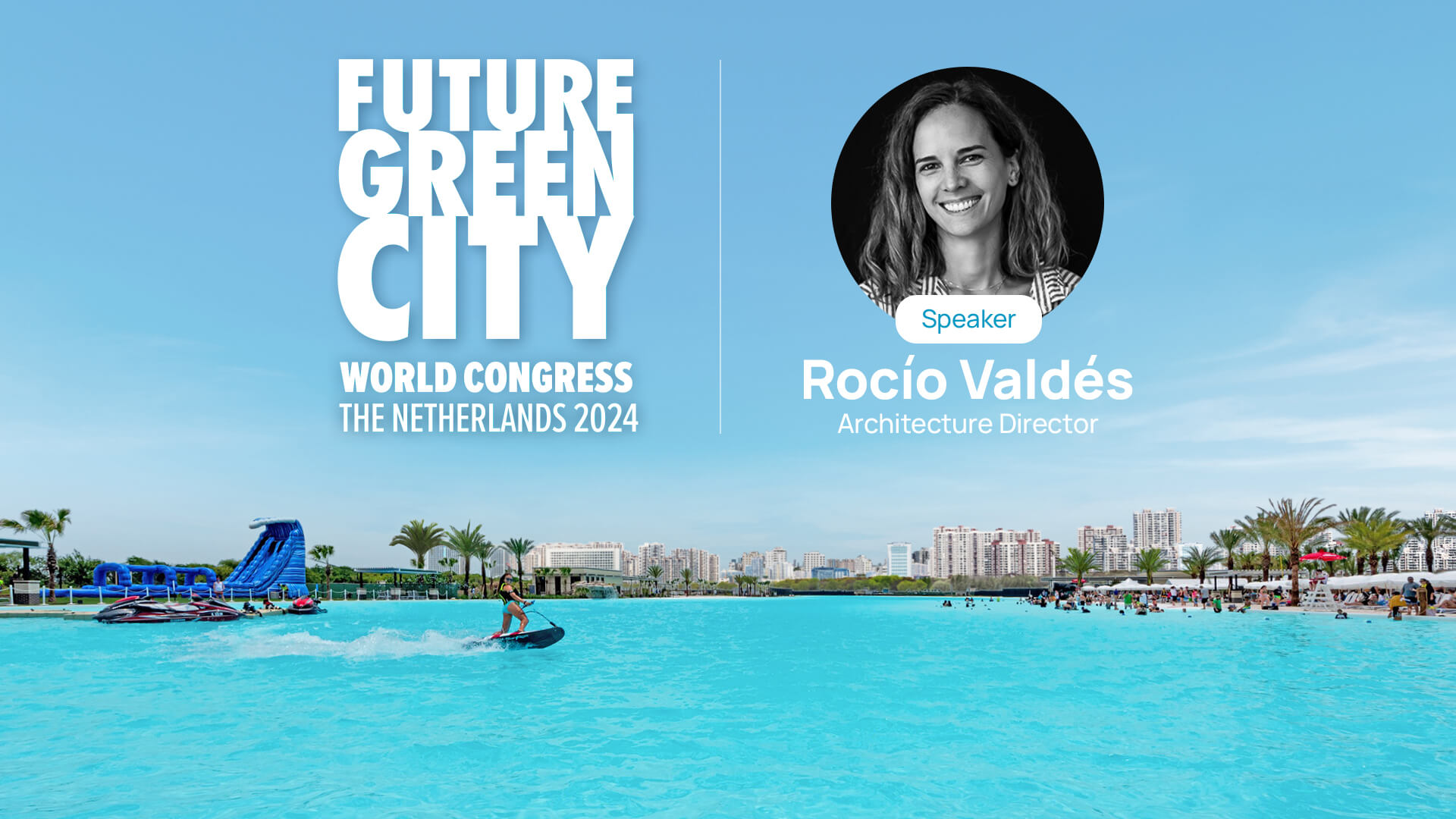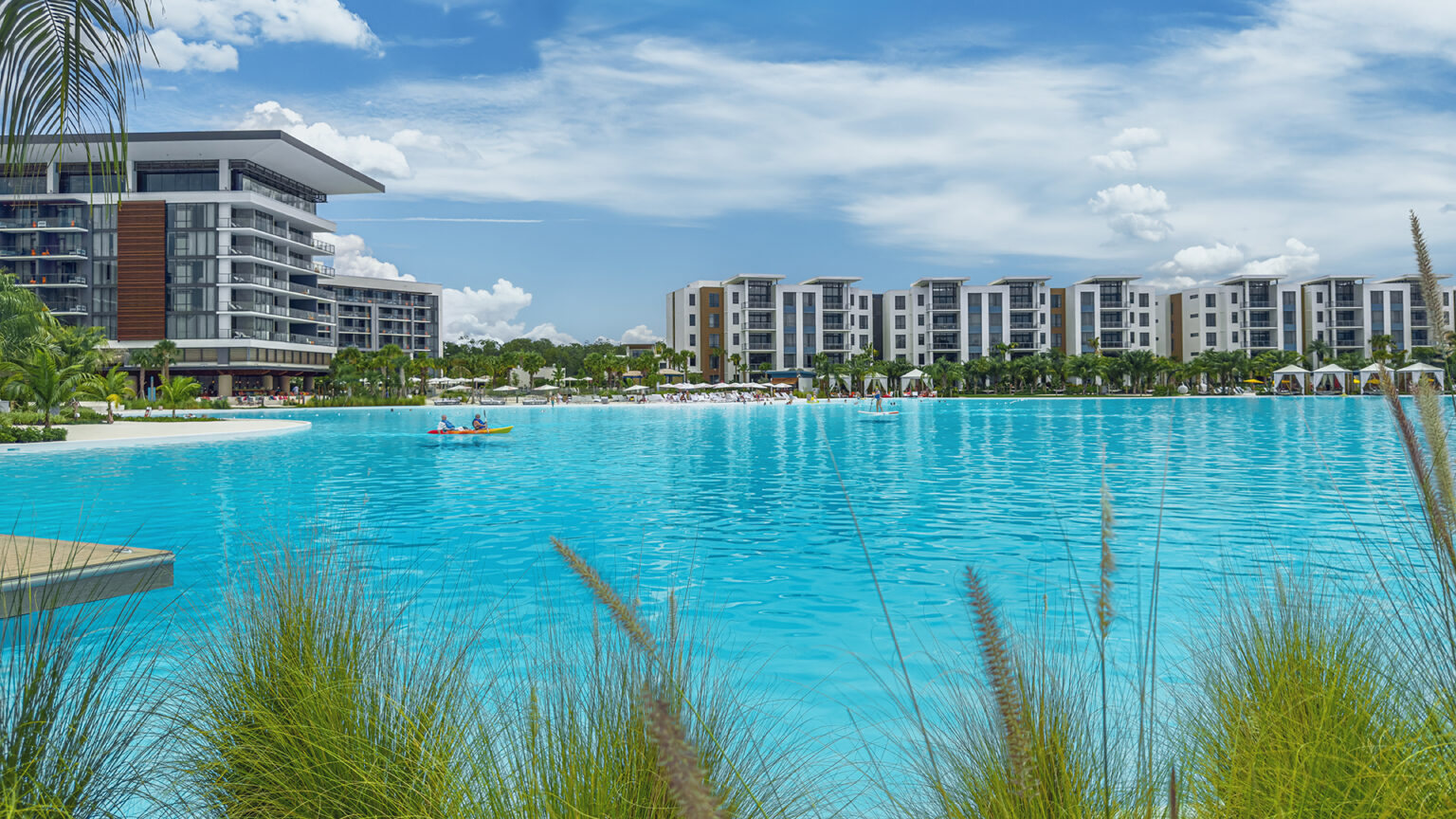The sustainability of Crystal Lagoons® technology and the urban contribution of the Public Access Lagoons® projects were the reasons why the multinational innovation company was selected to exhibit at the Future Green City world congress, to be held in September in the Netherlands.
Rocío Valdés, Director of Architecture at Crystal Lagoons, will represent the company at the event by presenting “Public Access Lagoons® projects: Bringing beach life to the City and Parks, lowering the World’s carbon footprint. “
Among the reasons that led the organization to select Crystal Lagoons as a speaker is how the Public Access Lagoons® projects, also known as PAL®, are changing the lives of millions of people living in urban settings by bringing beach life, swimming, water sports, and entertainment to their doorstep. This, much like town parks did 200 years ago, attracting citizens who, until then, had had to travel to the outskirts to connect with nature.
These developments are setting a new standard for public entertainment venues and democratizing quality recreational spaces. However, they are much more than mere beaches and large bodies of water. Each PAL® project is a destiny, a pole of attraction for tourism, and a driver of the local economy. They are cultural, entertainment, and service centers offering a wide range of activities and areas, such as peninsulas for weddings, event spaces, concerts, fairs, retail, restaurants, hotels, beach parties, water sports, etc.
The PAL® complexes achieve true urban transformations in any city worldwide. They substantially enhance the urban environment and serve as an alternative to the need for spaces with water bodies, delivering a variety of physical, emotional, and health benefits to the quality of life.
But they do not only contribute from the urban sphere. From a sustainable standpoint, developing these complexes worldwide would reduce the equivalent of 40% of the carbon footprint in the tourism and transportation sector, amounting to 14 million tons of CO2. This is because bringing beach life with turquoise waters and white sands to any city would decrease transportation to coastal destinations and natural beaches by approximately 50%.
Also, an average one-hectare lagoon consumes 40% less water than a park or green area of the same size and 33 times less water than an 18-hole golf course and can use any type of water: fresh, sea, or brackish. Crystal Lagoons® amenities consume only 2% of the energy required by conventional pool filtration systems and use up to 100 times less chemicals than a traditional swimming pool.
The Future Green City World Congress will be held from September 23 to 26, 2024, in Utrecht, the Netherlands, and more than 4,000 experts worldwide will share their passion and knowledge about the liveable green city with a future here. The event is an initiative of the Royal Association Stadswerk of the Netherlands and the Royal Dutch Association of Landscapers and Gardeners (VHG) in cooperation with World Urban Parks (WUP) and the International Federation of Municipal Engineering (IFME).






